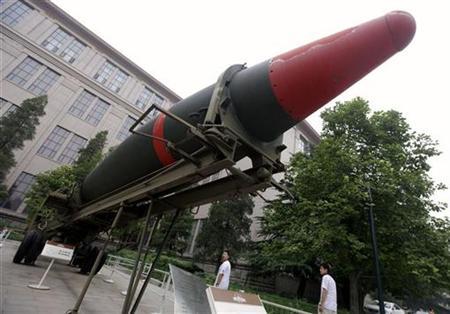During its ascent to the title of the world’s number-one economy, China has been know for its projecting its rising power through economic means, not military. Also, while it possesses a nuclear weapons arsenal, it’s comparatively small (though to this author, one nuclear weapons is too large an arsenal), it’s been defined by its adherence to a first no-first-use policy, one to which the United States doesn’t commit.
But China’s hostility-averse posture seems to be changing. In October, the National Interest ran a chapter from a book by John Mearsheimer titled Can China Rise Peacefully?
If China continues its striking economic growth over the next few decades, it is likely to act in accordance with the logic of offensive realism, which is to say it will attempt to imitate the United States. Specifically, it will try to dominate Asia the way the United States dominates the Western Hemisphere.
… Furthermore, like the United States, a powerful China is sure to have security interests around the globe, which will prompt it to develop the capability to project military power into regions far beyond Asia. … Indeed, China will have a vested interest in creating security problems for the United States in the Western Hemisphere, so as to limit the American military’s freedom to roam into other regions, especially Asia.
In other words, to whatever extent, we have only ourselves to blame. Then, in a new article, also for the National Interest, titled Welcome to China and America’s Nuclear Nightmare, Eldridge Colby writes
For all the focus on maritime disputes in the South and East China Seas, there is an even greater peril in Asia that deserves attention. It is the rising salience of nuclear weapons in the region. China’s military buildup—in particular its growing capabilities to blunt America’s ability to project effective force in the western Pacific—is threatening to change the military balance in the area. This will lead to a cascade of strategic shifts that will make nuclear weapons more central in both American and Chinese national-security plans, while increasing the danger that other regional states will seek nuclear arsenals of their own.
… More concretely, nuclear weapons may come to loom larger—and perhaps much larger—than they have since the Cold War over U.S. and Chinese military planning, strategic calculations in capitals, and concerns over escalation and brinkmanship in the Asia-Pacific.
Among the reasons that Colby believes this to be true:
… a war in the region between the United States and China under circumstances of even rough conventional parity will be more susceptible to nuclear escalation. In the past … the United States would have been able to defeat Chinese attacks on Taiwan or other such plausible beneficiaries of American defense with relatively limited means and on Washington’s terms.
But
… future efforts to defeat Chinese attempts at power projection will not be so easily handled, especially without our needing to resort to vertical or horizontal escalation to prevail.
… Even without anyone really wanting to introduce nuclear weapons into the equation, then, these trends raise classic “inadvertent escalation” risks. … if one needs to fight harder against an opponent in order to prevail, it also becomes harder to limit the war—including in ways that might entangle nuclear weapons.
Worse, loss of an advantage in conventional weapons in the Pacific could spur the United States to rely more on nukes.
In the event that the United States does lose its conventional advantage, Washington may well seek to rely on its own nuclear weapons to compensate for outright inferiority or for the inability of its conventional forces to fight back in a way sufficiently controlled to suit U.S. interests in limiting a conflict.
Oddly enough
This reliance would, in effect, be a return to U.S. policy during the Cold War, when Washington relied on its nuclear forces to offset Soviet conventional superiority in Europe.
You don’t have to be as hawkish as the author to be deeply disturbed by the implications.

